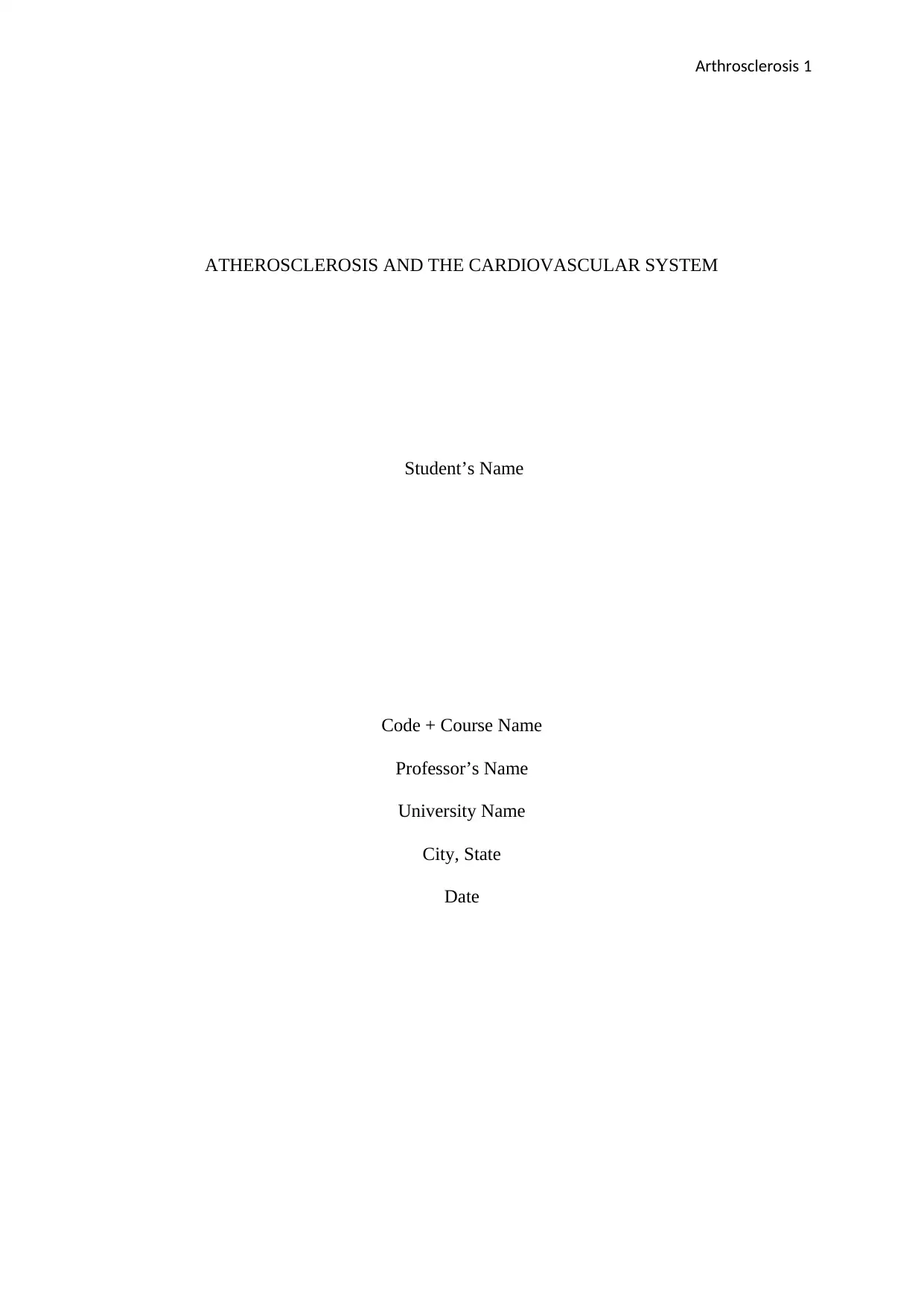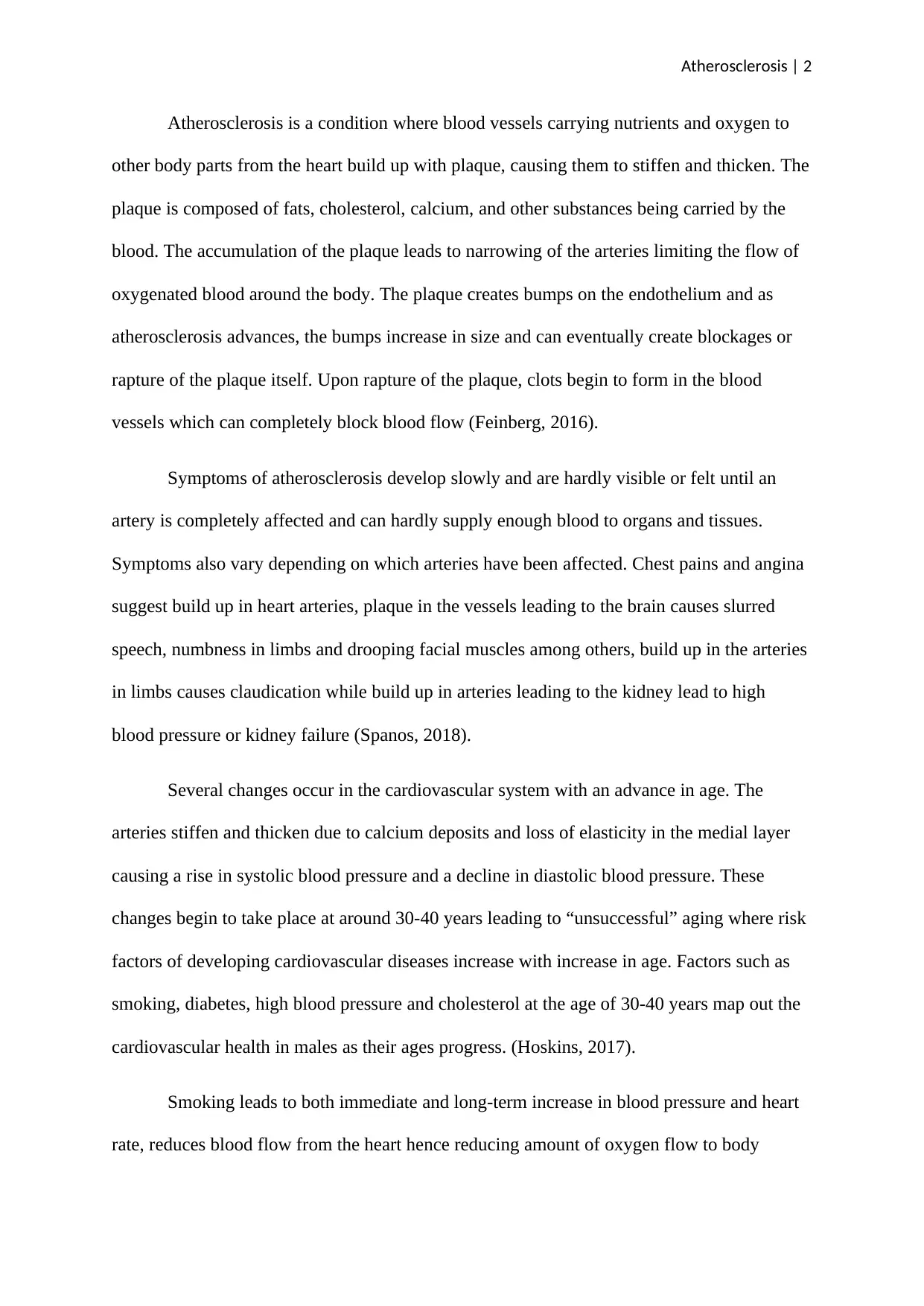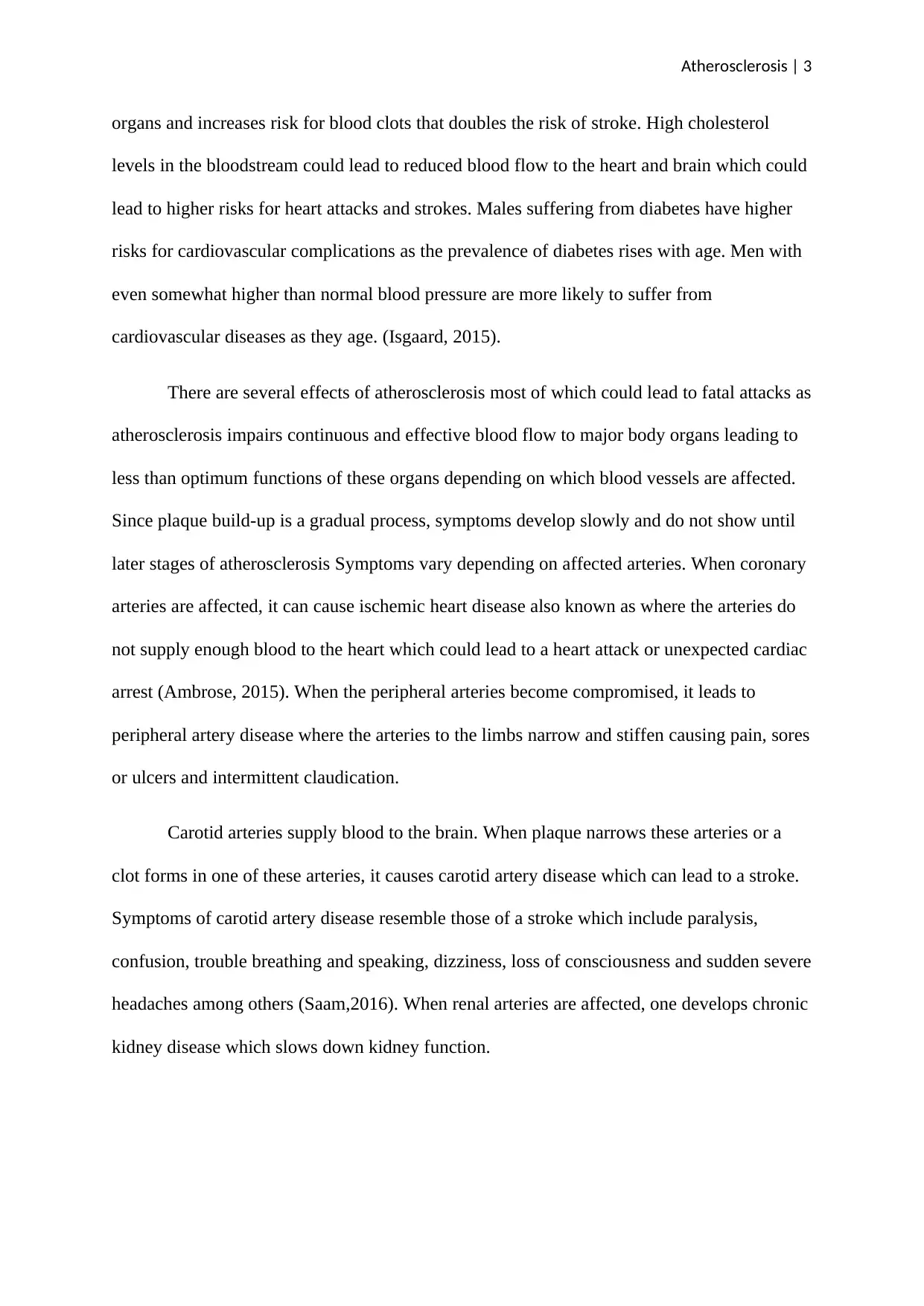Analysis of Atherosclerosis and Cardiovascular System Report
VerifiedAdded on 2022/10/19
|4
|965
|11
Report
AI Summary
This report provides an overview of atherosclerosis, a condition characterized by the buildup of plaque in the arteries, leading to their stiffening and narrowing. The report details the composition of plaque, composed of fats, cholesterol, calcium, and other substances, and how its accumulation restricts blood flow, potentially leading to blockages or rupture. It describes the gradual development of symptoms, which vary based on the affected arteries, including chest pains, slurred speech, numbness, claudication, and high blood pressure. The report further explores the changes in the cardiovascular system with age, such as arterial stiffening and increased blood pressure, and highlights risk factors like smoking, diabetes, and high cholesterol. It also outlines the severe effects of atherosclerosis, including ischemic heart disease, peripheral artery disease, carotid artery disease, and chronic kidney disease, emphasizing the potential for fatal outcomes due to impaired blood flow. The report references several studies to support the information provided.
1 out of 4











![[object Object]](/_next/static/media/star-bottom.7253800d.svg)